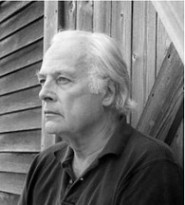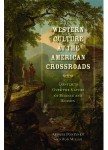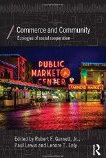Government Versus Community: Reflections on Cornuelle’s “De-nationalizing Community”
In Reclaiming the American Dream (1993 [1965]), the work that first brought him to national attention, Richard Cornuelle introduced the term independent sector into the lexicon. This sector—not business, not government––Cornuelle saw as the voluntary, people-centric mechanism for reclaiming the American dream.
As Cornuelle ruefully noted, however, the independent sector’s multifarious participants were not organized beyond their local sphere of operations, lacked a conscious sense of identity, and had little appreciation of the potential of their sector to ameliorate the problems faced by late twentieth-century America. Worse yet, he noted, the independent sector “is unreliable; it performs unevenly; its brilliant achievements stand in contrast to miserable failures, it often exhibits a stubborn backwardness” (1993 [1965], 45). Cornuelle’s goal, of course, was to give identity, momentum, and prestige to this large, but little-noticed, sector.
Cornuelle’s first book stimulated a national discussion and eventually spawned an organization named Independent Sector, founded in 1980 by John W. Gardner. More proximately, however, Cornuelle’s thinking found its way into one of several remarkable national radio addresses by Republican presidential candidate Richard Nixon in 1968. Reclaiming the American Dream had identified the danger of overgrown, centralized, stultifying government and the potential of the independent sector, and that thought found its way into Nixon’s address entitled “Toward an Expanded Democracy,” delivered on June 27, 1968. In that speech, Nixon promised to create a Commission on Government Reorganization if elected. It would, said Nixon, “seek new ways to transfer functions from government to private enterprise, and also to the great, vital voluntary sector—to enlist the energies of those millions of Americans who stand ready and eager to serve and to help, in the best American tradition.”
On October 6 of that year, Nixon released a Cornuellean position paper entitled “The Voluntary Way,” in which he pledged the creation of a national clearinghouse for information on voluntary solutions. By then I was one of the candidate’s special assistants, and one of my tasks was to lay the groundwork for the clearinghouse pledged in that statement. I discovered a bright, young graduate student named Roger Feldman, and I charged him with finding a computerized database management program that could accept thousands of abstracts on successful voluntary problem-solving actions, and start loading them in. (This was a much larger challenge in 1968 than it is today!)
Promise Unfulfilled
Another assignment was to organize the President-elect’s task force on voluntary action. I called Cornuelle and asked him to be its chair. The only two members I can recall now—the task force documents have slid into the memory hole, alas—were Prof. Sebastian DeGrazia and John Kennedy confidant Richard Goodwin, whom Nixon had quoted in his June address. This promising sequence of events suggested that Cornuelle’s thinking was gaining ground in the national debate. With a new president seemingly persuaded of the importance of voluntary action in reclaiming the American dream, one would have thought that the independent sector would become a highly salient feature of emerging national policy. But one would have been wrong.
To the best of my knowledge, no one in the Nixon administration ever read the report of the Cornuelle task force, nor did anyone seek out Cornuelle for his counsel in reorienting national policy as the President had promised. Nixon delivered on his proposed commission to reorganize government—known as the Ash Commission—but its focus was exactly that: reorganizing the federal government. It had little or nothing to say about devolving responsibility and resources to the independent sector. The database project I had begun never found a home, and it vanished—only to be proposed again in 1981, as if nothing of its kind had ever happened before.
The one Nixon appointee who fervently believed in Cornuelle’s thesis and took it seriously was Housing and Urban Development Secretary George Romney, rest his soul. His four-year tenure at HUD, however, was unhappy, to say the least, and Nixon quickly came to see Romney as a chronic problem rather than an asset. If you look up the word “Nixon” in the index of Cornuelle’s book Healing America (1983), the most informative of the four references describes Nixon’s ignominious failure even to terminate the National Board of Tea Experts.
This recitation could easily be carried on through the public careers of the following four Republican presidents. Let me skip to my sorrowful conclusion from forty-some years of beating the drum for reclaiming the American dream through voluntary action: stimulating the independent sector to overcome America’s problems remains a powerful concept. It has broad appeal. It makes good campaign rhetoric. But the unorganized voice of the independent sector is invariably drowned out by the plethora of organized interest groups that swirl about any national administration. Indeed, as evidenced by the faith-based initiative program of President George W. Bush, many of the organizations of the independent sector, once so skeptical about government programs and involvement, now too often see Washington as an ever-bountiful cornucopia of preferences and subventions, not as an obstacle to progress.




